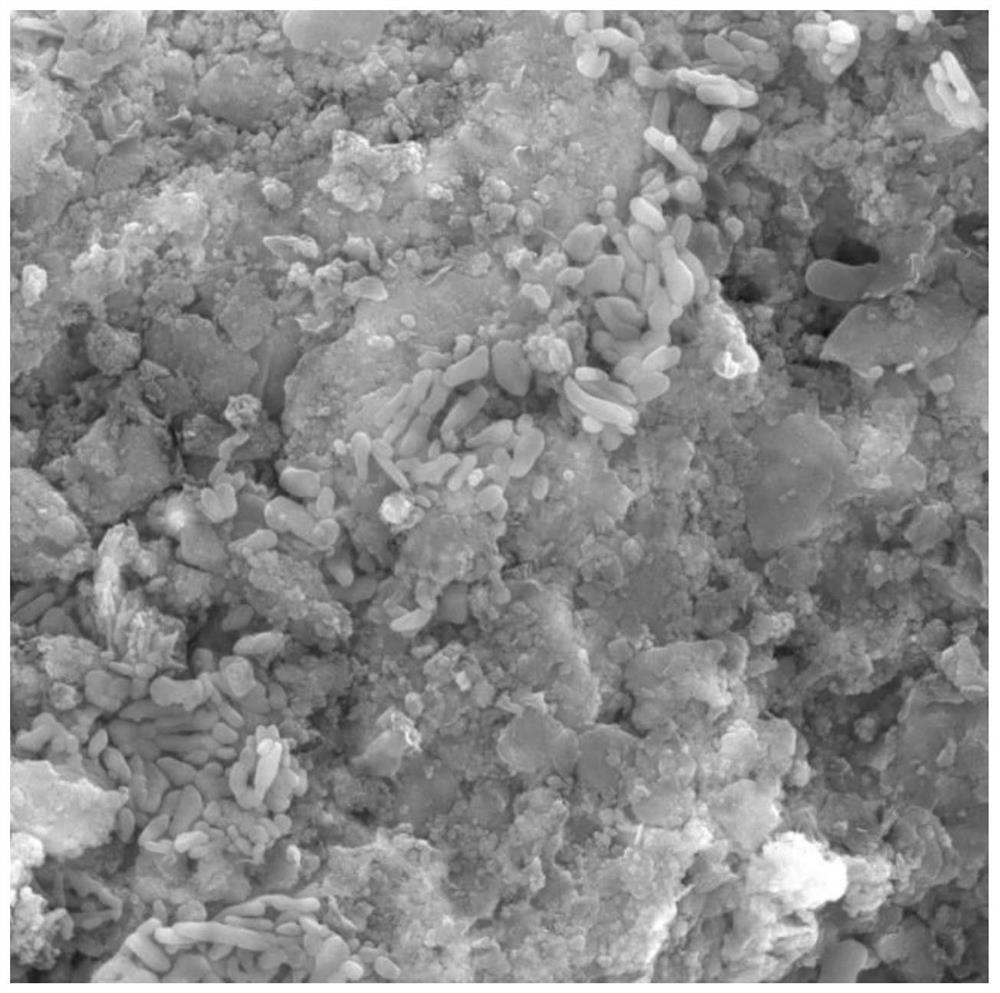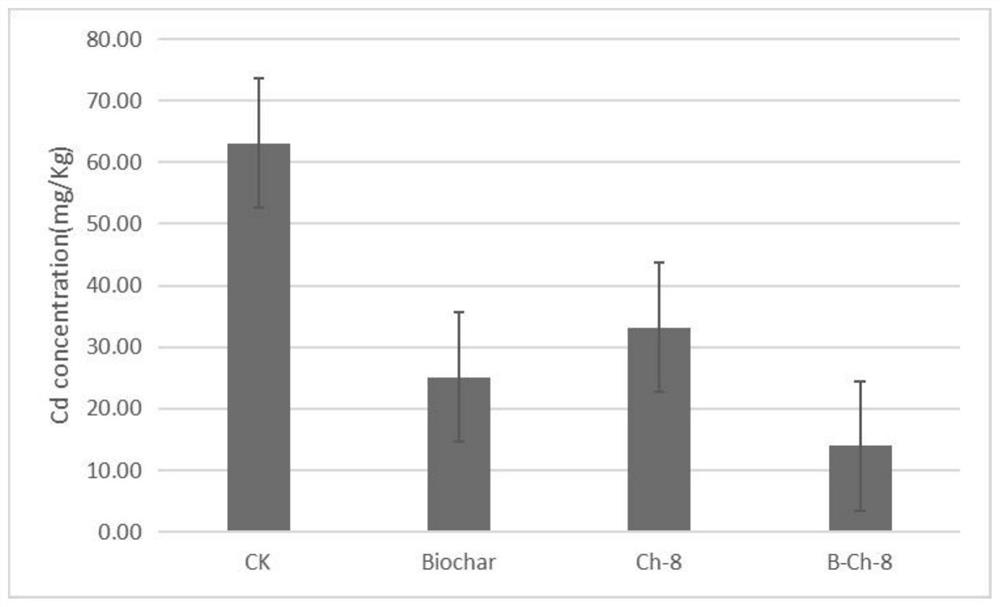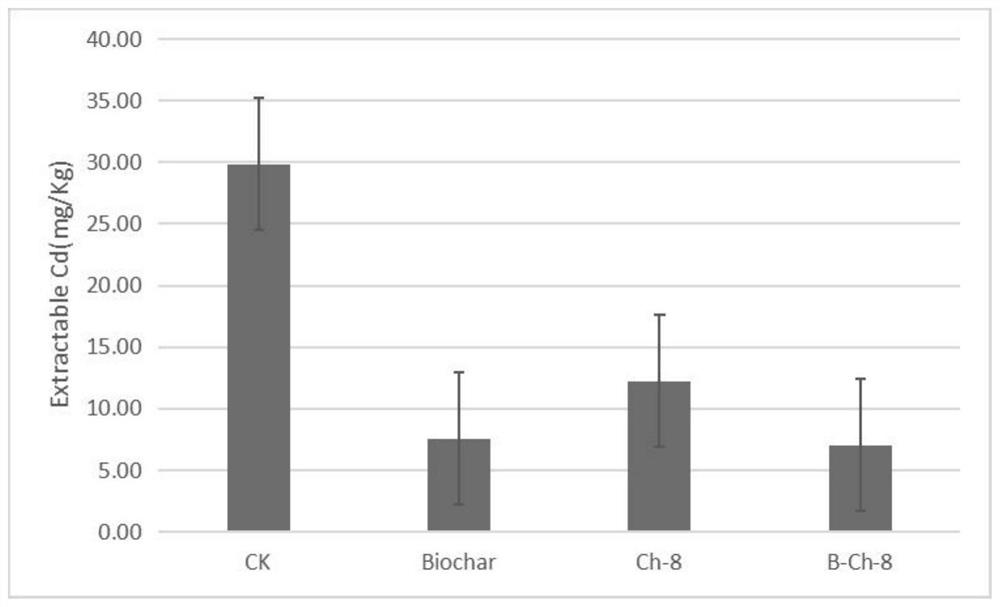A method of sludge biochar immobilization bacteria combined with phytoremediation of heavy metal polluted soil
A technology for phytoremediation and polluted soil, applied in the restoration of polluted soil, etc., can solve the problems of difficult competition of indigenous microorganisms, prone to functional degradation, and difficult survival of microorganisms, so as to promote the extraction of heavy metals, improve the ability of survival and colonization, and improve The effect of plant biomass
- Summary
- Abstract
- Description
- Claims
- Application Information
AI Technical Summary
Problems solved by technology
Method used
Image
Examples
Embodiment 1
[0029] Embodiment 1: a method for sludge biochar immobilized bacteria combined with phytoremediation of heavy metal contaminated soil, comprising the following steps:
[0030] S1. Screen out Robinia pseudoacacia with a high level of resistance to heavy metal cadmium;
[0031] S2. Screen and isolate the rhizobacteria of Robinia pseudoacacia that are resistant to various heavy metals from the restoration plants in the mining area. The rhizobacteria of Robinia pseudoacacia can be added to the rhizosphere of various plants including Robinia pseudoacacia to play a role;
[0032] S3, screening the bacteria with resistance to a variety of heavy metals obtained in step S2, and isolating single bacterial strains capable of dissolving phosphorus, fixing nitrogen, secreting plant growth hormones (IAA and ACC) and secreting siderophores;
[0033] S4, utilize potted plant test, carry out plant tie-back test to the bacteria obtained in step S3, obtain the bacteria that can promote plant bio...
Embodiment 2
[0036] Embodiment 2: a method for sludge biochar immobilized bacteria combined with phytoremediation of heavy metal contaminated soil, comprising the following steps:
[0037] S1. Screen out Robinia pseudoacacia with a high level of resistance to heavy metal cadmium;
[0038] S2. Screen and isolate the rhizobacteria of Robinia pseudoacacia that are resistant to various heavy metals from the restoration plants in the mining area. The rhizobacteria of Robinia pseudoacacia can be added to the rhizosphere of various plants including Robinia pseudoacacia to play a role;
[0039] S3, screening the bacteria with resistance to a variety of heavy metals obtained in step S2, and isolating single bacterial strains capable of dissolving phosphorus, fixing nitrogen, secreting plant growth hormones (IAA and ACC) and secreting siderophores;
[0040] S4, using the pot experiment, the bacteria obtained in the step S3 are subjected to a plant back-connection test to obtain bacteria that can pro...
Embodiment 3
[0043] Embodiment 3: a method for sludge biochar immobilized bacteria combined with phytoremediation of heavy metal contaminated soil, comprising the following steps:
[0044] S1. Screen out Robinia pseudoacacia with a high level of resistance to heavy metal cadmium;
[0045] S2. Screen and isolate the rhizobacteria of Robinia pseudoacacia that are resistant to various heavy metals from the restoration plants in the mining area. The rhizobacteria of Robinia pseudoacacia can be added to the rhizosphere of various plants including Robinia pseudoacacia to play a role;
[0046] S3, screening the bacteria with resistance to a variety of heavy metals obtained in step S2, and isolating single bacterial strains capable of dissolving phosphorus, fixing nitrogen, secreting plant growth hormones (IAA and ACC) and secreting siderophores;
[0047] S4, using the pot experiment, the bacteria obtained in the step S3 are subjected to a plant back-connection test to obtain bacteria that can pro...
PUM
 Login to View More
Login to View More Abstract
Description
Claims
Application Information
 Login to View More
Login to View More - R&D
- Intellectual Property
- Life Sciences
- Materials
- Tech Scout
- Unparalleled Data Quality
- Higher Quality Content
- 60% Fewer Hallucinations
Browse by: Latest US Patents, China's latest patents, Technical Efficacy Thesaurus, Application Domain, Technology Topic, Popular Technical Reports.
© 2025 PatSnap. All rights reserved.Legal|Privacy policy|Modern Slavery Act Transparency Statement|Sitemap|About US| Contact US: help@patsnap.com



